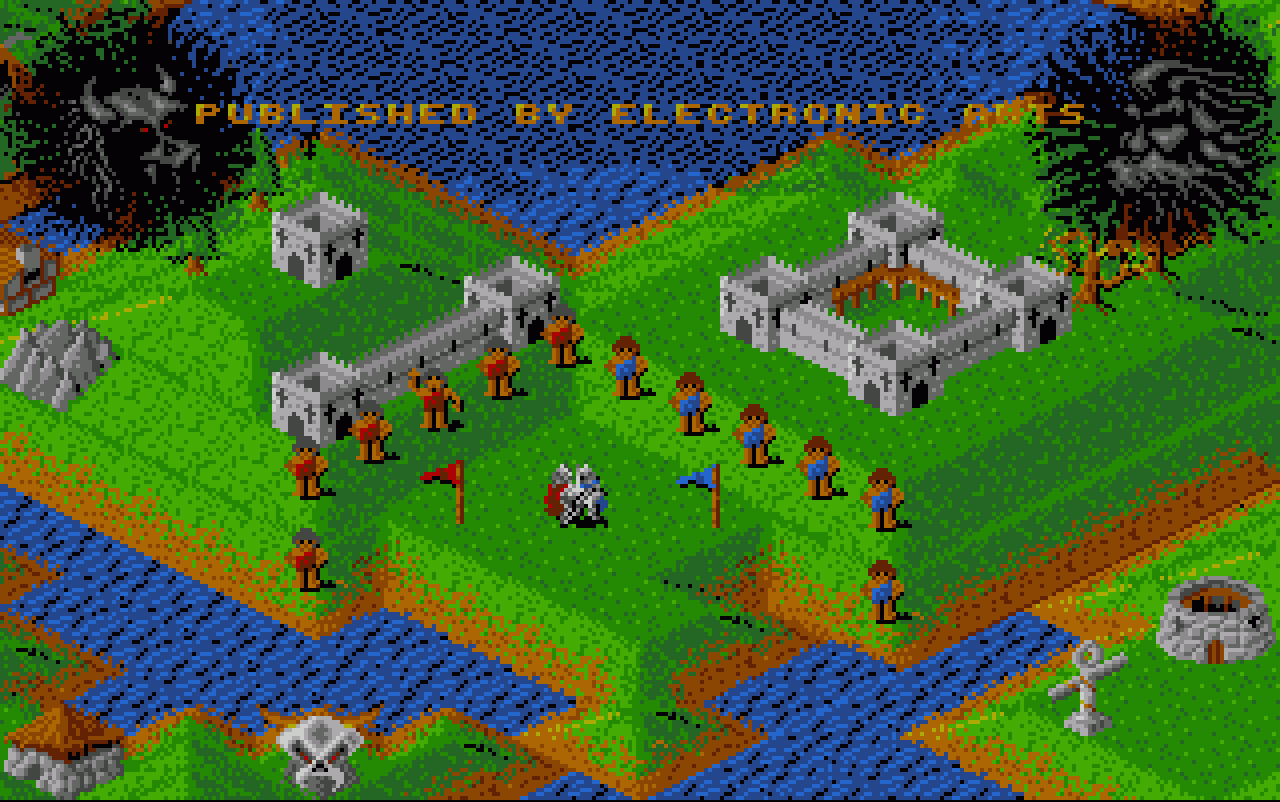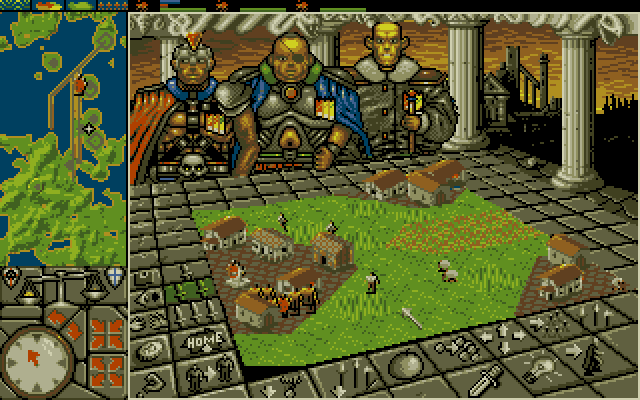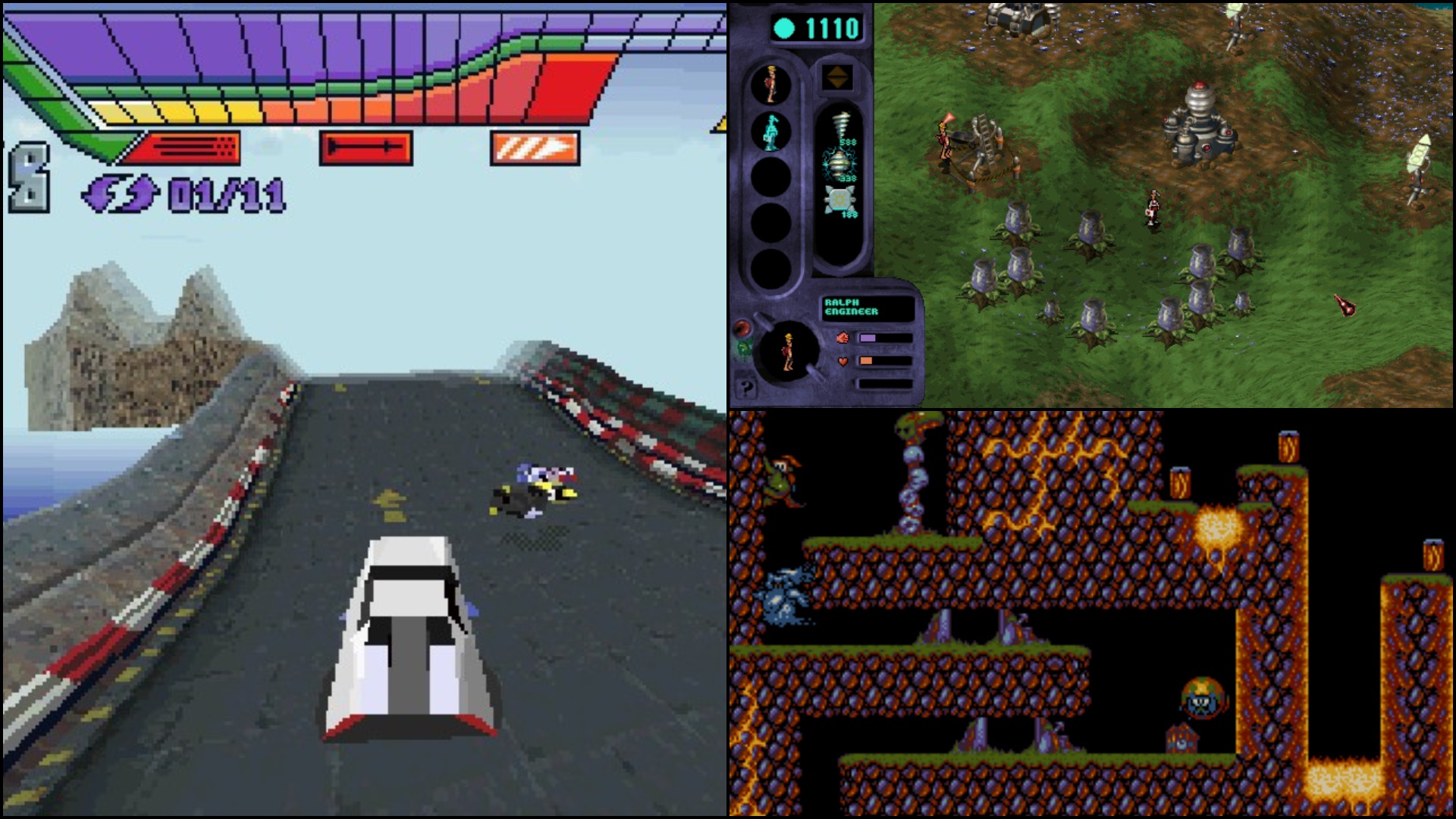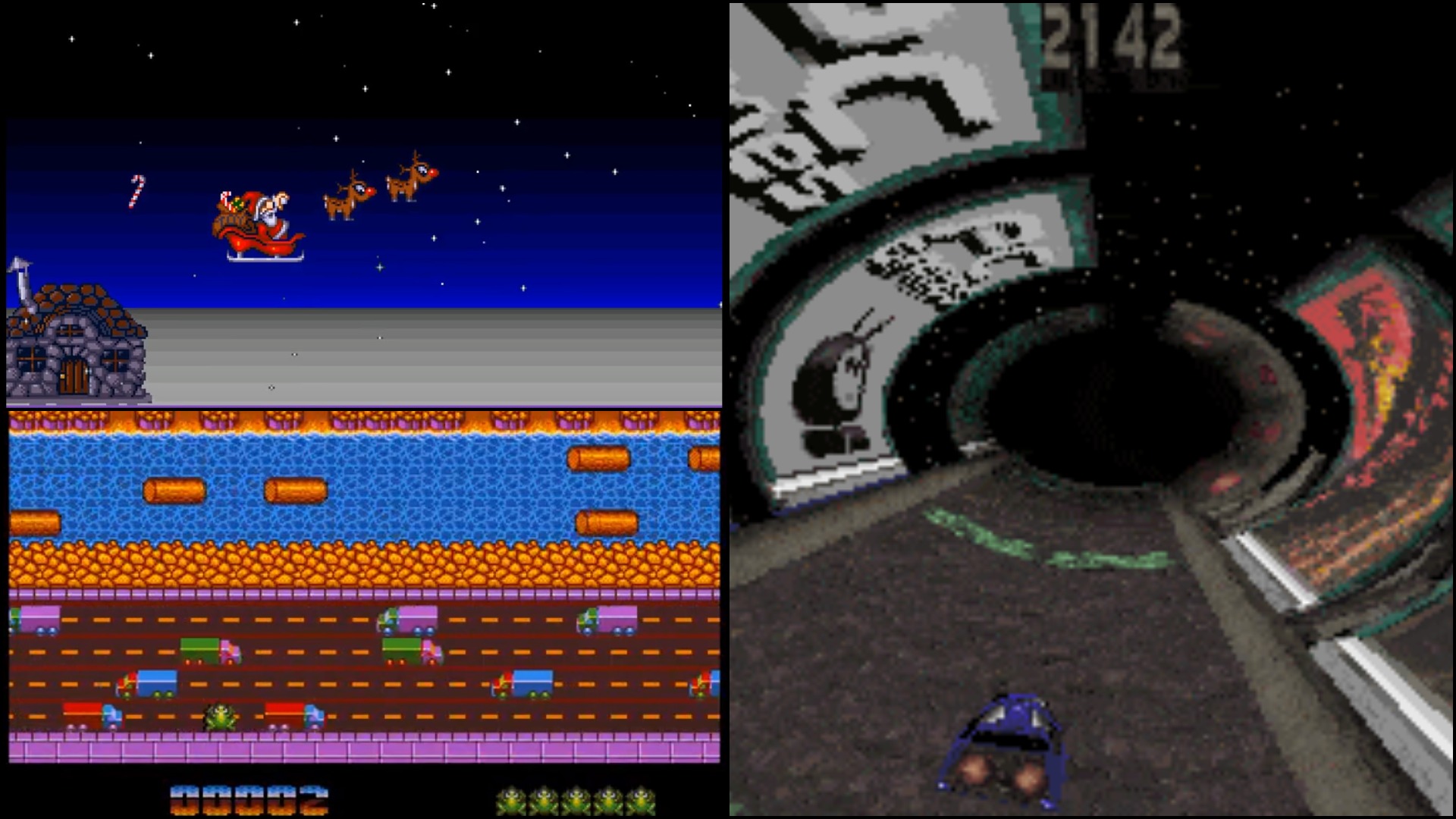So much talent was in the company that following its closure by Electronic Arts in 2001, many new development studios emerged from ex-employees that went on to create new titles and spiritual successors that held on to the magic of Bullfrog's past games.
- Lionhead Studios (Black & White, Fable series)
- Two Point Studios (Two Point Hospital, Two Point Campus)
- Media Molecule Ltd (LittleBigPlanet, Tearaway series)
- 22Cans Ltd (Godus, The Trail: Frontier Challenge)
- Flaming Fowl Studios (Fable Fortune, Gloomhaven)
- 5 Lives Studios (Satellite Reign, Windbound)
- Elixir Studios (Evil Genius, Republic: The Revolution)
- Mucky Foot Productions (Startopia, Urban Chaos)
- Lost Toys Ltd (Battle Engine Aquila, Moho)
- Crescent Moon Games (Topia World Builder)
- Qi Studios (Rag Doll Kung Fu)
Not many studios (British or otherwise) have had so much of an impact on video games even after they're dead and gone. If you're as big a fan of Bullfrog as we are, we highly suggest you check out some of the titles from the studios above, many of which you can find on Steam or GOG.com
Fusion
Fusion was Bullfrog's first game developed from the ground-up, originally designed to show off their ability so they could be taken seriously when pitching their genre-building game 'Populous' to publishers. Released in 1988 for the Amiga and Atari ST and published by Electronic Arts (as would all of their commercial releases going forward), Fusion was a fairly standard sci-fi shooter that received mixed to positive reviews. Despite not taking the world by storm, Fusion did show that Bullfrog could competently put together a full, functional and entertaining game, meaning they had much more than just a port of someone else's title [Druid II] to show when trying to get the green light on their next game to come!
Populous
Possibly the first game ever to have its prototype build using Lego, Populous was the game Bullfrog always had in mind when they founded their studio. The idea was for a living world in which you, the player, acted as God - manipulating the "peeps" and the world they inhabit, shaping their lives and eventually leading them to war. Despite Fusion having already released, Populous was still hard to publish due to the team's lack of reputation. Electronic Arts reportedly had a gap in their spring release lineup and agreed to take a punt on the game and its new ideas, offering a pretty atrocious contract according to Peter Molyneux of just 10% royalties, increasing by 2% if it passed a million units sold and a small up-front payment to fund development.Bullfrog themselves were sceptical of how successful the game would be, Populous was, however, a massive success for such an underfunded new property, even more surprising considering it was such an unknown and misunderstood genre. Populous single-handedly introduced gamers to the God Game genre, releasing in 1989 on Microsoft DOS, Amiga and Atari ST, it eventually sold over four million units, placing it (at time of writing) within the top 30 best-selling PC games in history. EA obviously didn't choose to increase Bullfrog's royalty stakes to congratulate them on such a successful release, but it thankfully sold so well that it secured them as a company and allowed them to continue to explore new ideas.
Populous went on to win over 20 separate awards and released to 10 further platforms including consoles such as the NEC Turbogrfx-16, Sega Master System, Sega Megadrive (Genesis) and Super Nintendo Entertainment System. Two expansions 'The Promised Lands' and 'The Final Frontier' released in the year following adding new landscapes. Sequels followed in 'Populous II: Trials of the Olympian Gods' in 1991, 'Populous: The Beginning' in 1998 and 'Populous DS' in 2008 for the Nintendo DS. Peter Molyneux formed 22cans in 2012 and attempted a modern re-imagining of Populous with his 2014 release of 'Godus'.

Powermonger
Development on Powermonger began as a result of pressure from Electronic Arts to release a follow-up to Populous (we wonder why). While not officially part of the Populous series, with much more focus on war and less on simply lording over a population of primitive humans, it can be seen as what another dimension's sequel to Populous might have looked like.The focus on combat actually mirrors Peter Molyneux's more recent attempt at making a God game with 'Godus', the first much more concerned with exploring and building your society and the follow up 'Godus Wars' being more battle orientated. Powermonger dropped the pixel graphics in favour of polygons, meaning the angle of view could be rotated. Fairly advanced AI is given to the units this time, allowing them to wander around seemingly doing tasks at their own free will, taking away some of the micromanagement found in Populous.
Powermonger released in 1990 for Amiga and Atari ST but received ports for MS DOS, Mac OS, Sega Megadrive, SNES, and Sega CD to name a few during the years that followed. An official expansion named 'World War I Edition' released in 1991 that offered 175 new territories and gave a World War 1 theme to your units, vehicles and wildlife. Powermonger never received a sequel, but the sequel to Populous followed the year after and took the reigns from thereon.

Flood, Hi-Octane and Genewars
Bullfrog released a handful of smaller titles between 1990 and 1996 mostly for home computers such as Amiga, Atari and MS-DOS. None were particularly ground-breaking, especially when compared to other Bullfrog titles, but possibly one of the most well-received of the three was Flood, released in 1990 for Amiga and Atari ST, Flood is a platformer that tasks you with collecting as much litter as you can before exiting each level. It featured fairly advanced water physics for its time and has aged considerably well.Released next was one of the only two racing games ever put out by Bullfrog. According to Peter Molyneux, EA set Bullfrog a target of little over 6 weeks to develop and release their then in-the-works dungeon management game "Dungeon Keeper", not wanting to spoil that project, the team instead used the Magic Carpet engine and the time allotted to create a driving game in the vein of other popular titles at the time such as Wipeout and Virtua Racing. That game was 'Hi-Octane' and released in 1995 on MS-DOS followed by Playstation and Sega Saturn ports.
The last of Bullfrog's smaller commercial releases was 1996's Genewars - a sci-fi, fantasy, real-time strategy game that featured terrain sculpting and cross-species breeding which could be viewed as a primitive mixture of games like Spore and Starcraft, titles that both came years after Genewars. It was, however, relatively not that well-received, winning the "Most Disappointing Game of 1996" by GameSpot. Genewars did not receive releases on any other platforms besides MS-DOS.

Bullfrogger, Psycho Santa and Tube
Bullfrog experimented with only a few shareware titles during their short time in existence and while you'd likely expect them to be tech-demos at best and tongue-in-cheek rip-offs at worst, you'd mostly be right - however, as a child one of them kept my attention for way too many hours. These games weren't sold or released via large publishers like most their games and instead distributed as freeware through magazines. The first being Bullfrogger, a fast-paced Frogger clone with almost nothing unique to its name, in fact even its name wasn't all that unique, Bullfrogger released in 1992 for the Amiga.Next was the strange and creepy Psycho Santa, a game in which you deliver gifts to houses that you supposedly steal from a Christmas Tree, all while dodging icicles, flying snowmen, cooked turkeys and grim reapers in the night sky. The controls were hard and frustrating to master and the sound effects were grating, but something about this title kept me playing for hours on end. Psycho Santa was released in 1993 for Amiga.
The last of Bullfrog's shareware titles was Tube, a 3D racing game that took place in a long, seemingly endless tube that displayed images of the respective magazine's logo on the walls, each magazine that distributed the game having its own version. There were collectable power-ups, allowing for the destruction of obstacles along the way. You would win by beating the track before the time ran out. Tube released in 1995 for Microsoft DOS.

Syndicate
Set in a dystopian and futuristic world, Syndicate is an uber-violent game putting you in control of an organisation of cybernetic agents fighting for global domination, feeling like it would fit in the universe of Judge Dredd with ease. War between law enforcement and rival agencies is common-place, money is made through taxation of the regions you gain control of and your agency is expanded through forced recruitment of victims found throughout the city. You control your agents as a whole unit (similar to games like Cannon Fodder).Syndicate released in 1993 on Amiga and MS-DOS, with subsequent releases on platforms such as Mac, Sega Megadrive, SNES, Amiga CD32, Atari Jaguar, Sega CD, PSP and Windows. An expansion named 'American Revolt' was released the same year, followed by the sequel 'Syndicate Wars' in 1996 and the first-person reboot simply titled 'Syndicate' by Starbreeze Studios in 2012. Mike Diskett, the producer and lead programmer for the original game released a spiritual successor to Syndicate in 2013 titled 'Satellite Reign'.

Magic Carpet
This game's appearance was likely a surprise to most people at the time. Magic Carpet is a first-person, 3D, open-world game of exploration and battle. You play as a wizard on a magic carpet and fly over landscapes battling creatures and other wizards, collecting their mana in which you use to fill your home castle - we know, it sounds like either a great or very bad acid trip, but it certainly makes the game unique, even today there aren't many titles like it. Magic Carpet was also odd in that it supported anaglyph 3D (the perception of image depth you get while wearing those very 80s red and blue shaded glasses) and even supported the primitive VFX1 virtual reality headset!Magic Carpet released in 1994 on MS-DOS and to Playstation, Sega Saturn, Windows and Mac in the years following. Versions were in development for the Atari Jaguar and 3DO, but these never made it to release. An expansion titled The 'Hidden Worlds' was released in 1995 and its direct sequel 'Magic Carpet 2: The Netherworlds' the same year.

Theme Park
Conceived as a way to make business management games fun, Theme Park was a game Peter Molyneux wanted to work on to make right the mistakes he made when developing his 1984 text-based title The Entrepreneur. The team travelled amusement parks around the world in the name of "research" and even recorded real sounds of visitors on the rides to use in-game. The concept is pretty simple; build, manage and observe an active and hopefully successful family Theme Park. Borrowing ideas from titles like SimCity, you are offered an open plain of grass and tools to help you build "the theme park of your dreams!".You have the freedom to adjust various details in the game, from the pricing of entry and rides, down to the salt and sugar levels in the food served, increasing the former helped you sell more soft drinks - the mechanics were simple enough to get your head around but deep enough to immerse yourself in. The graphics were colourful and cute and appealed to a Japanese audience as much as it did with Europeans.
Theme Park released in 1994 for MS-DOS, Mac, Amiga and the 3DO, followed by a multitude of ports (20 in total!) including Playstation, Sega Megadrive, SNES, Nintendo DS, PS Vita and even Android/iOS. The sales reportedly total over 15 million lifetime units sold, making it one of the best selling games of all time, despite not doing well in America. It was around this time that Bullfrog was bought out by Electronic Arts, the two sequels that followed weren't developed by founding members of the team, which probably explains their lack of fanfare. 'Theme Park World' released in 1999 and 'Theme Park Inc' in 2001, the latter being the last game developed and released by Bullfrog Productions before they were merged with EA UK.

Theme Hospital
Off the back of Theme Park's success, the team discussed what theme they could base another management sim on, Hospitals was one that was brought up multiple times, so work began. The team visited various hospitals around the UK to research and get ideas for how they could build the assets and objectives in the game, but soon realised the free healthcare system of the NHS wouldn't make for interesting enough areas of management since funding is mostly raised via grants and taxes and not like a typical business. So they based the hospital simulation more on those found in America.Another idea that didn't work early on was the illnesses and processes in which to cure them, sticking early on to realistic diseases and treatments left little room for humour. So the development took a different approach and instead invented fictional health conditions and medicines that would make the players laugh and not wince. The box art originally sported a green cross, which was a copyright Bullfrog did not have permission to use, this was mistakenly approved due to a black and white fax of the box art and later had to be recalled from store shelves, however, modern releases have seen the return of the green cross. The game was well praised for its pleasant graphics, addictive gameplay, catchy soundtrack and witty humour.
Releasing in 1997 for MS-DOS and Windows and a year later for Playstation, Theme Hospital sold a total of 4 million copies, putting it in the top 30 best-selling PC games to date. Theme Hospital never received an official sequel however a Japanese targeted game titled 'Theme Aquarium' that modelled itself closely on Theme Hospital's gameplay and aesthetic released the following year in Japan for Playstation and the EU on Windows two years later. Producer Mark Webley and Artist Gary Carr who worked on the original title, formed Two Point Studios in 2016 and released their spiritual sequel to Theme Hospital titled 'Two Point Hospital' in 2018.

Dungeon Keeper
Dungeon Keeper was an intentional step away from Bullfrog's cute and colourful games and made forces of evil the focus. No longer were you managing theme parks filled with joyful children or hospitals swarming with Elvis impersonators, now you were an evil underlord overlooking a gloomy dungeon of grotesque creatures and demons! You would command your imps to carve hallways and open areas into the dirt underground for you to build various rooms and training grounds, and if they didn't work quickly enough you'd give them a swift backhand up the side of their monstrous noggins to show them who was boss!The objective was always simple, spread demonically throughout the underworld and conquer any and all rival keepers in your way, casting a spell at any point to warp the camera into the first-person perspective of a demon of your choice, allowing you to use their attacks and powers against the enemy, or remain the above all-seeing eye and let your minions roam and battle as they see fit. Part god game, part real-time strategy and part first-person hack and slash, Dungeon Keeper was a merge of genres never seen before and laid the ground for countless impersonations and successors to follow.
Dungeon Keeper released in 1997 for Windows and MS-DOS, later receiving a port to Mac. An expansion named The Deeper Dungeons was released in 1997 and its sequel (maybe the last truly great game developed by Bullfrog), 'Dungeon Keeper 2' released in 1997 - debatably improving upon the original in every way. A now dead online MMORPG named 'Dungeon Keeper Online' was released in 2012 and a mobile free-to-play game 'Dungeon Keeper Mobile' released in 2014. Peter Molyneux approved fan-project and spiritual successor to Dungeon Keeper named 'War for the Overworld' was released by British development studio Brightrock Games in 2015.

While Bullfrog Productions no longer operate and all their employees have moved on to different projects of their own, Electronic Arts still own the intellectual property of all Bullfrog games and despite a few Windows and Mac releases on their Origin platform, they've done very little to revitalise the games that gamers have such fond memories of. Due to some of these games being difficult to play on modern computers, outside of the 2012 reboot of Syndicate all Bullfrog fans have left to play from these series are freemium mobile apps.
Therefore, below we have listed some great (and some less than great) games that aimed to capture the essence of Bullfrog's most loved titles, feel free to check them out and/or suggest your own to our readers!
- Dungeon Keeper > War for the Overworld
- Theme Hospital > Two Point Hospital
- Syndicate > Satellite Reign
- Populous > Reprisal Universe
- Theme Park > Planet Coaster
- Margic Carpet > Arcane Worlds
- Powermonger > Godus Wars
What are your favourite Bullfrog games and which would you most like to see sequels to? Or would you rather they were just left alone..?


